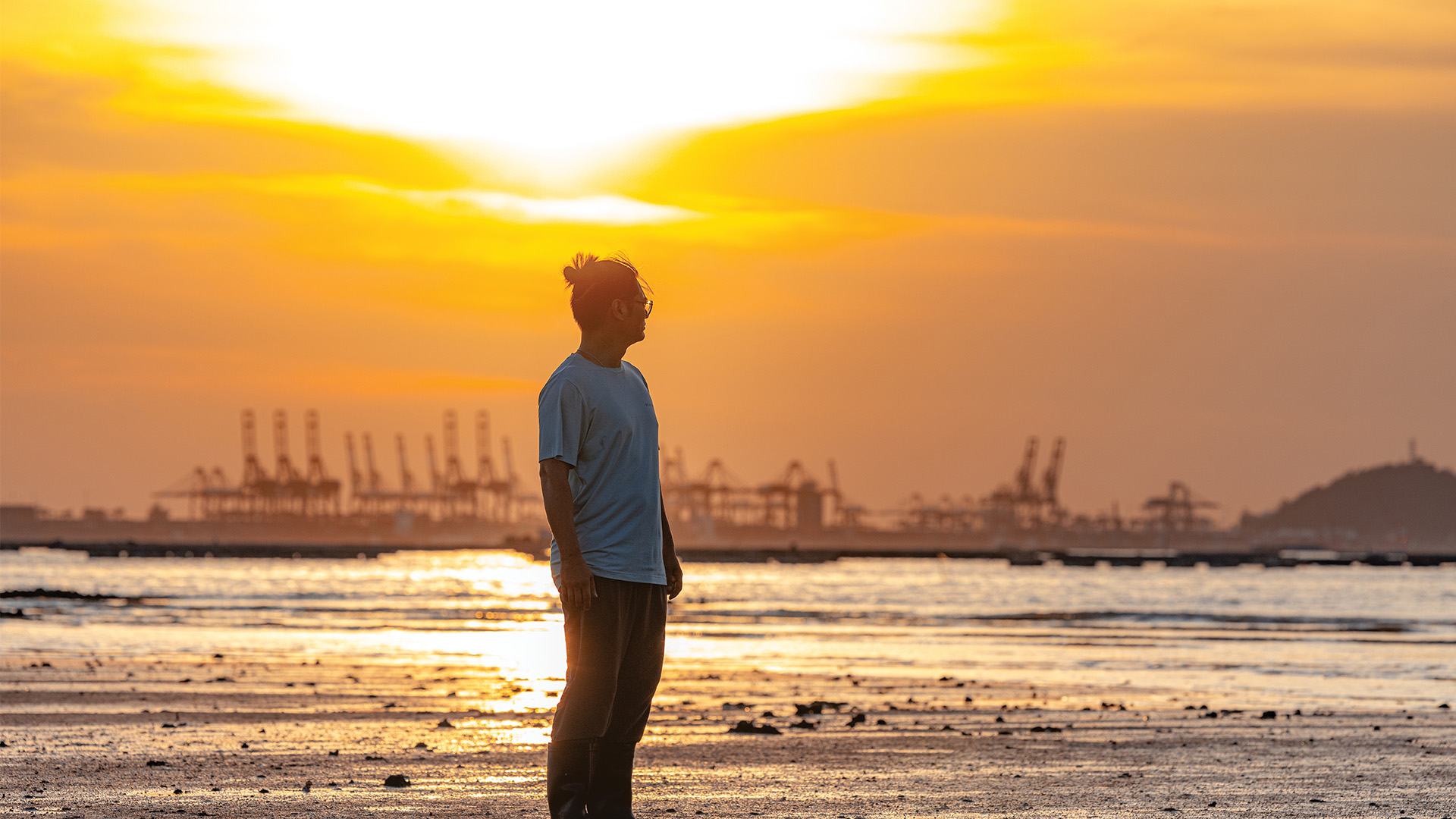
As a child, Chan Shu-fung remembers getting up when it was still dark and heading out to sea by boat with his parents to harvest oysters.
He and his family would collect up the molluscs, which they farmed in baskets hanging from rafts floating in the shallow coastal waters of Deep Bay, and then spend the next few hours opening the oyster shells. They had to do that before dawn to sell them at the morning fish market.
“It was winter so we had to work in the freezing cold,” says Chan. “You could get chilblains, and sometimes even suffer injuries from a knife or the rough-edged shells. It’s hard labour.”
Now 43, Chan is the president of the Deep Bay Oyster Cultivation Association, which represents oyster farmers in Lau Fau Shan, a village in Hong Kong’s northeast New Territories. Known for its dramatic sunsets, Lau Fau Shan, or ‘floating mountain’ in Cantonese, looks out over the wide expanse of Deep Bay, with the high-rise city of Shenzhen looming across the water.
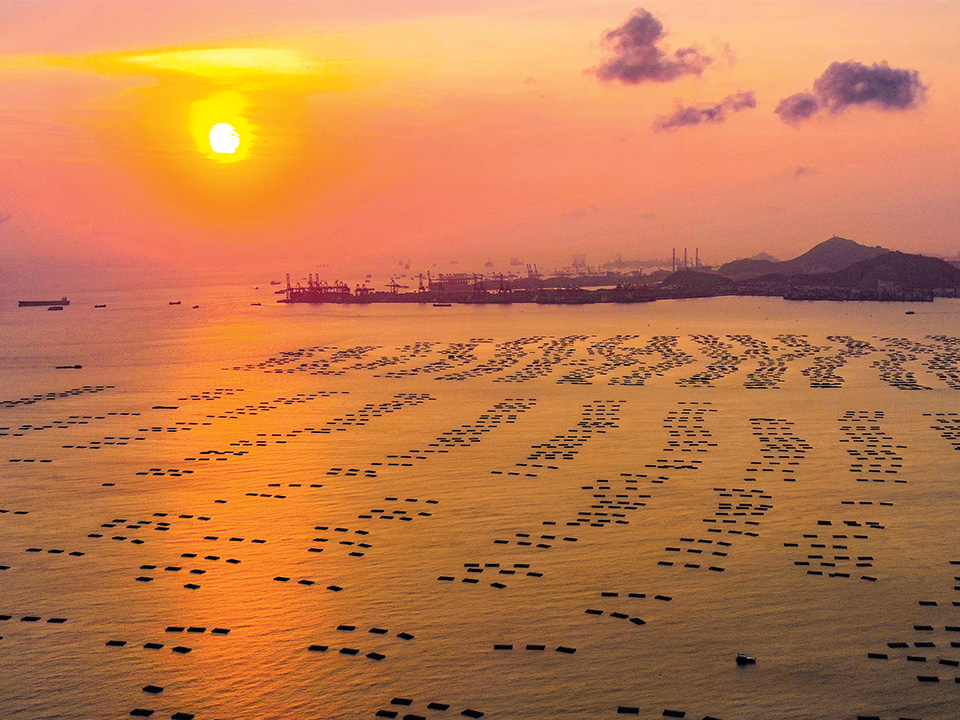
Deep Bay sits at the mouth of a shallow estuary where the fresh waters of the Pearl River meet the sea. The area’s wetlands and mudflats are foraging and roosting grounds for waterbirds such as the critically endangered spoon-billed sandpiper and other migrant winter birds.
“Growing up in the area, I used to venture everywhere with other children,” Chan says. “We’d go out to the seaside, take a swim, and look for the creatures around. These days, people like to go to Ha Pak Nai to see the fiddler crabs and mudskipper fish — we used to spot them, too. The mudflat beside the village of Ha Pak Nai, about 20 minutes away by minibus from Lau Fau Shan, is also a well-known sunset spot.”
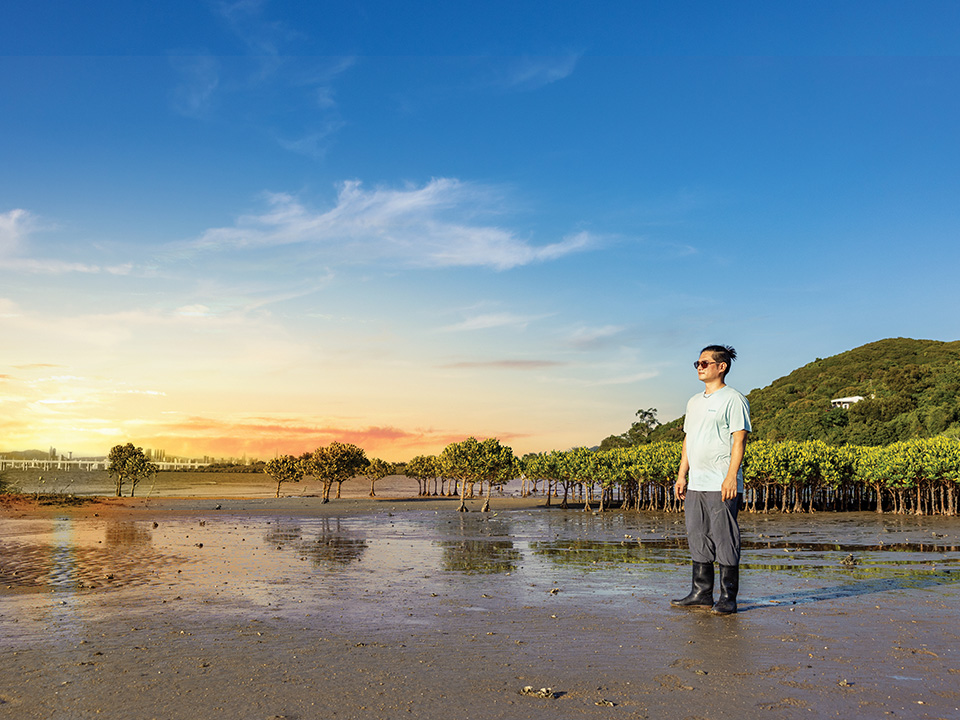
Deep Bay’s brackish water, combined with Hong Kong’s temperate climate, form a favourable coastal environment for an indigenous species of oysters bearing the city’s name: the Hong Kong oyster (Magallana hongkongensis).
“The flavour of Hong Kong oysters is layered,” Chan describes. “When they mature, the meat becomes plump with a nice and firm texture.”
The history of oyster farming in Lau Fau Shan dates back more than 700 years. According to Chan, there were about 300 families in the village involved in the trade when he was a child. But like many other traditional trades, the industry has been in steady decline as younger generations choose to move to the city to pursue other professions.
Chan was among those who left the village for urban life, but he returned in 2014 because he could not bear the thought of leaving his ageing parents behind to fend for the business. “This business raised me and my siblings,” he says. “It would be a shame if it could not continue.”
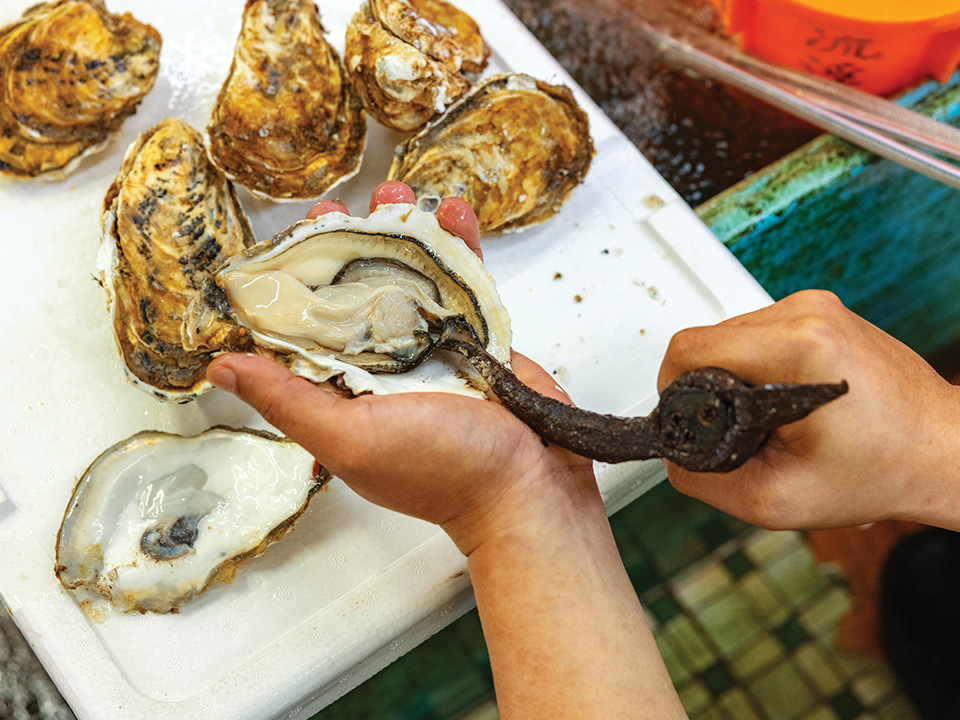
Yet Chan did not return simply to keep things running as before; he wanted to make the entire industry better. In addition to improved marketing, he has also introduced new business practices to make oyster farming more efficient and sustainable. As an industry leader, he does a lot of work communicating with his counterparts and government officials about ways to make sure Deep Bay remains a fertile area for growing oysters.
In 2018, with assistance from the government-financed Sustainable Fisheries Development Fund and his own investment, Chan introduced a filtration system where harvested oysters are kept for a few days to be purged of impurities before they are prepared for sale. “I want people to know the oysters they are getting are in optimal condition,” he says.
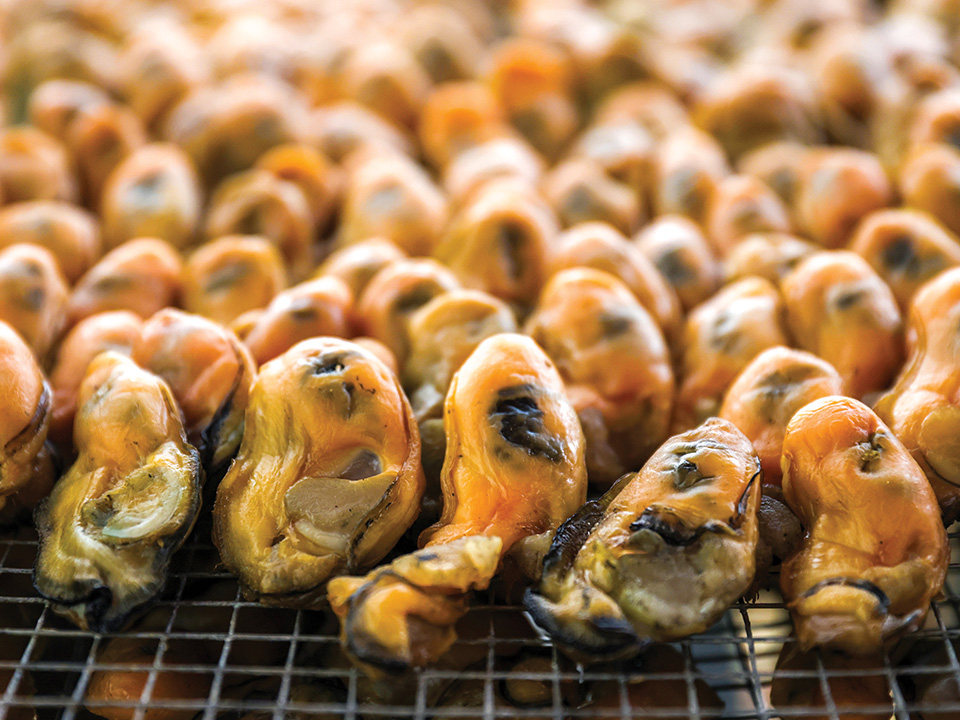
Lau Fau Shan oysters are traditionally sun-dried (semi-dried). The process intensifies the molluscs’ natural flavour, giving it a velvety texture and a nice hue. The finished product is widely known among gourmands as ‘golden dried oysters’.
“You can only achieve the best results with Hong Kong oysters. I’ve tried using imported oysters, but it’s just not the same,” says Chan. “It’s only when using the local species that you get that signature fragrant sweetness.”
Fresh Lau Fau Shan oysters are only in season during the colder months. Visitors can even buy the meat fresh and have it prepared at one of the village’s restaurants. You may still find fresh Lau Fau Shan oysters in the summer, but the texture is very different — either creamy or skinny — as it’s their reproductive season.
For Chan, oyster farming is not only a business, but also something that remains very close to his heart. He believes it is a tradition that is worth keeping alive. “One of my wishes is to see a museum built here one day, to let visitors learn more about this important part of Hong Kong’s history,” he says.
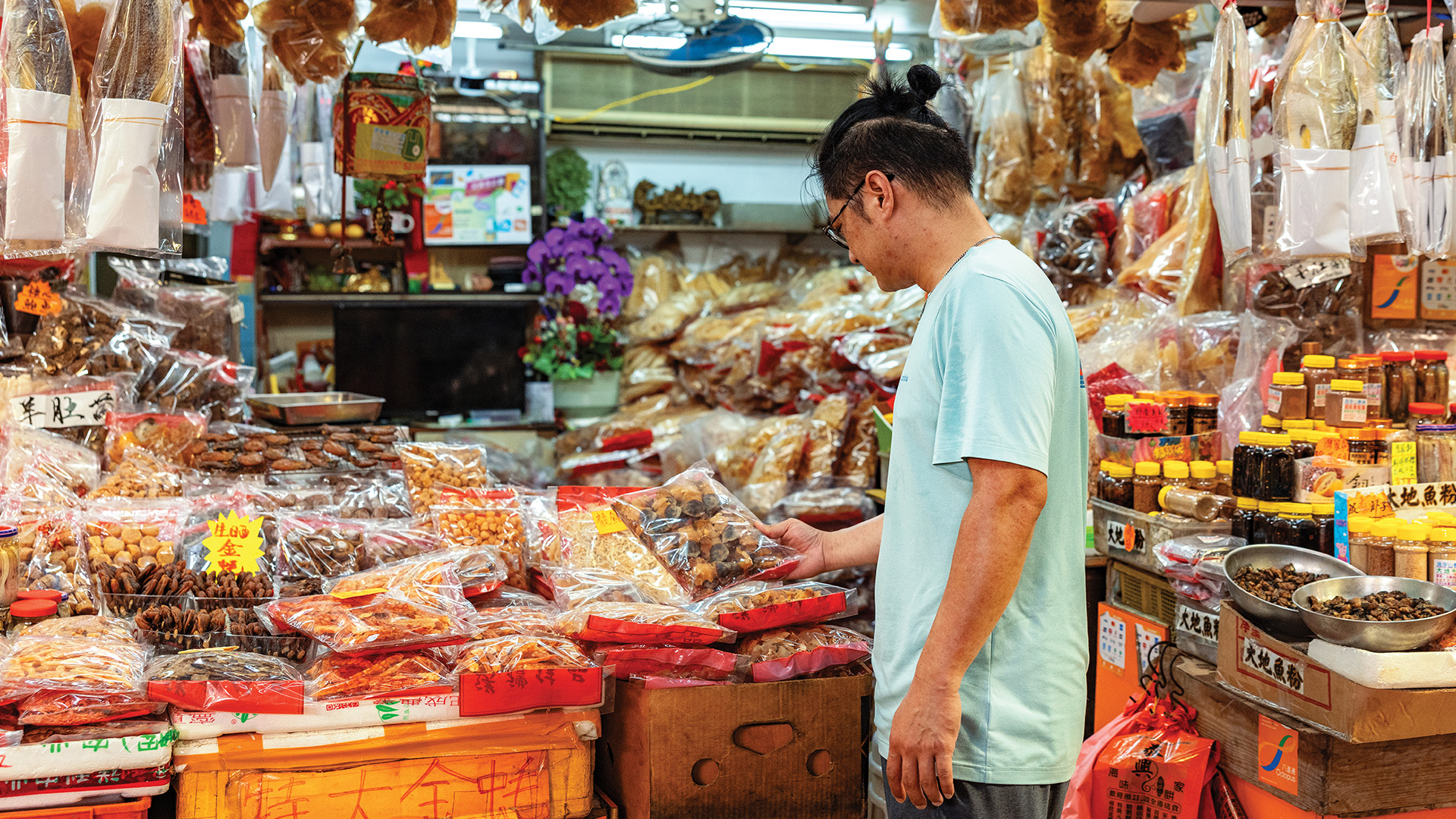
6 tips for enjoying Lau Fau Shan oysters by Chan Shu-fung
- One of the best ways to serve the golden dried oysters, especially the plumpest ones, is by pan-searing them with a honey glaze.
- Add small golden dried oysters into the classic Chinese congee to give it a sweet tanginess, or into a braised pork dish to give the sauce a kick.
- One of the simplest ways to enjoy fresh Lau Fau Shan oysters is to serve them stir-fried with ginger and spring onions, which complement the mollusc meat’s natural flavour.
- Fresh Lau Fau Shan oysters can also be served battered and deep-fried, a method that emphasises its complex sweetness.
- Lau Fau Shan oysters are ideal for hotpot in winter.
- Oyster sauce produced in Lau Fau Shan has a more savoury tang to it than the brands commonly found in the supermarket, according to Chan. It adds a unique sin mei — similar to what is commonly known as ‘umami’ in Japanese — to a dish.
Information in this article is subject to change without advance notice. Please contact the relevant product or service providers for enquiries.
The Hong Kong Tourism Board disclaims any liability as to the quality or fitness for purpose of third party products and services; and makes no representation or warranty as to the accuracy, adequacy or reliability of any information contained herein.




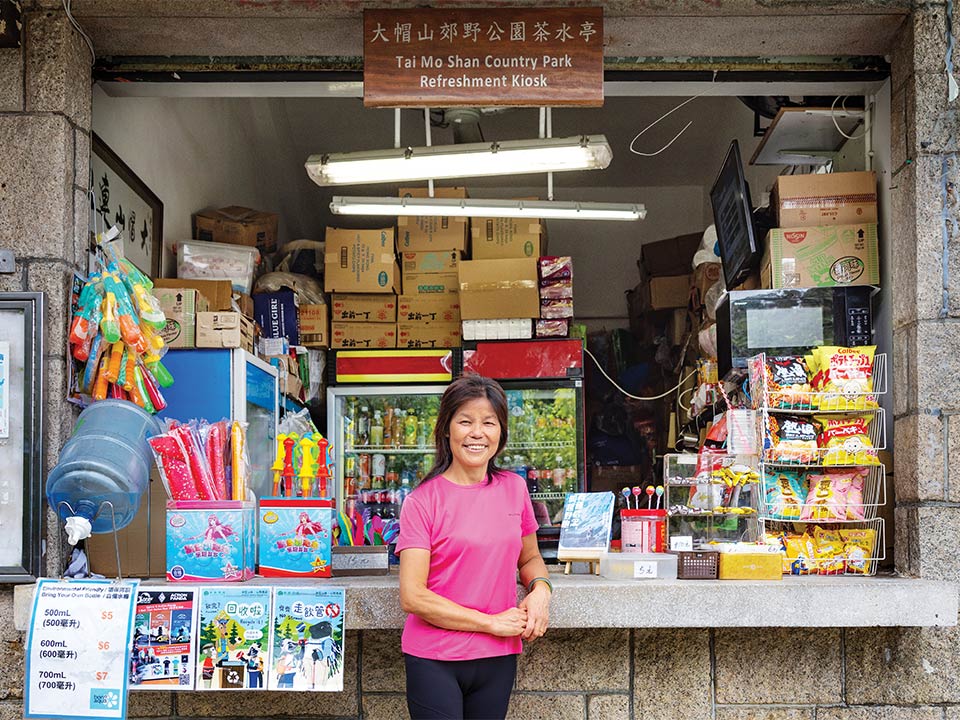

 Live Chat
Live Chat









